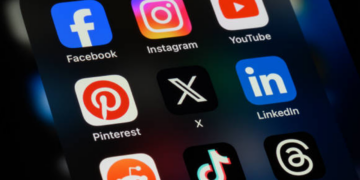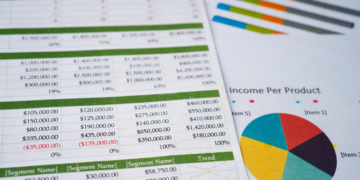Eyes tracking is a process in which the direction of view and eye movements are recorded by people, while they are confronted with representations, products, or environments. Classic applications are viewing advertisements, reading behavior on websites, or dealing with operating instructions.
User interfaces or packaging can also be examined for visual communication with the users. Even the sequence of vision when entering a shop or running through a supermarket can provide marketing strategists with important insights.
![]()
By evaluating the data, analysts can find out which areas within the field of vision have paid special attention. The time sequence in the visual recording of information is also important and can be examined. Eyes tracking is a useful tool that can provide real help in the classic marketing mix both in optimizing product policy and communication.
Tip
A practical application for eyes tracking is the ideal placement of the company logo within an advertisement. The logo should be perceived as quickly as possible in order to create confidence in the advertisement or the website via the brand image. With the logo generator, you can easily and free of charge your own logo. Try it!
How does eye-tracking work?
![]()
Special hardware and software are required to carry out studies with the help of eye tracking. The hardware consists of cameras that pick up the face or only the person’s eye area. The position of the pupils is recognized and their movement is dynamically followed by image recognition through the right software.
Professional hardware works in the infrared area (IR) because Iris and pupils are better recognized. For this purpose, the place recorded is illuminated with an infrared light source. Depending on the direction of view, the reflection of the IR light source is in the eye at a certain point. The camera records the review of the IR source. The software can then conclude the position of reflection relative to the pupil.
Where and when are Eyes Tracking used?
Eyes tracking is used when the user experience (the user experience) is to be optimized with the application on the visual level. User experience design (UX design) deals with the analysis, design, and optimization of the user experience. Typical applications for eyes tracking are, for example:
In public space:
- Guide in large buildings
- Liege indicator
Design of controls:
- Design of the user interface of a ticket machine
- Arrangement of controls in a cockpit
- The layout of the user interface of an app
In advertising and marketing:
- Design of a new product packaging
- Design and fitting a supermarket shelf
- Placement of photos, text, and graphics in an advertisement
In web design:
- Graphical structure of the navigation of a website
- Placement of conversion elements in online shops
Practice web design
After redesigning his web shop, the operator is faced with a doubling of the bounce rate. Something seems to prevent visitors from completing their purchases. After the trial purchase by 15 test subjects accompanied by an eyes tracker, it is clear that the button, which is to lead to the shopping basket, can only be found on the screen after an intensive search.
This search was probably reason enough for many visitors to cancel the shopping process. Small adjustments to the layout and design ultimately lead to a significant decrease in the bounce rate and again to more purchases.
What Hardware and Software for Eye Tracking are there?
The entire technical accessories to work with eyes tracking is divided into the hardware and software sector. There are various companies that either specialize in one area or offer complete solutions.
Eye-tracking hardware
The following solutions are available in the hardware area:
- Eye-tracking glasses are worn by the test subjects and follow every head movement. A glasses-based measuring method makes sense if the person has to move during the measurement or turn their head, e.g. B. while driving.
- An external camera, which is opposite the subject or the test subject, records the eye movements. This method can be used when displaying displays or other surfaces.
- Webcams can be used as eye trackers with the right software. However, the performance is by no means as good as with the hardware, which was specially developed for eye tracking. For example, the webcams integrated into the screen cannot work in the IR area.
See Also: Unlocking the Potential: Meta’s Quest Pro Eye-Tracking for Enhanced Ad Experiences
Eye-tracking software
In the software area, there is freeware offered by different developers. This includes, for example:
- XLABS from XLABSGAZE
- Opengazer from Samsung and the Gatsby Charitable Foundation
- PyGaze of the three universities Oxford, Aix-Marseille, and Utrecht
- Ogama from the Free University of Berlin
- Openeyes from Thirty-Sixth Span Internet Technologies
The lack of support is often disadvantageous here, so these offers are more likely to be aimed at hobbyists with programming skills.
On the other hand, there are commercial solutions that offer customer support or even customer-specific adjustments:
- Tobii Pro of the Tobii Pro Company
- iMotions Core of the company Imotions
- Verily of the company Neurotechnology
- D-Lab of the Ergoneers company
What is the goal of using Eye Tracking?
Eyes tracking can be used to determine which areas of the user in the field of vision are primarily perceived. A so-called heat map shows in different colors which areas are most frequently viewed in the field of vision. Red areas stand for an intensive view, while blue areas have hardly been viewed. So you can also find out which places in the field of vision are not even taken into account.
The phenomenon of non-observance has received the name “Banner Blindness” in advertisements. It describes the fact that certain elements or areas of a website are consciously or unconsciously not noticed by visitors. The “blindness” towards advertisements occurs through the habit with which the brain tries to separate important information from unimportant information.
With the help of eye tracking, for example, you can improve the placement of advertising on websites to generate more attention again.
The goal of UX design is to improve the user experience by evaluating eyes tracking data. This means simply displaying complex systems and bringing users to the desired goal as comfortably and quickly as possible. Apps and terminals should be more intuitive to use, dashboards of cars become clearer and the reading comfort of operating instructions or websites are improved.





























